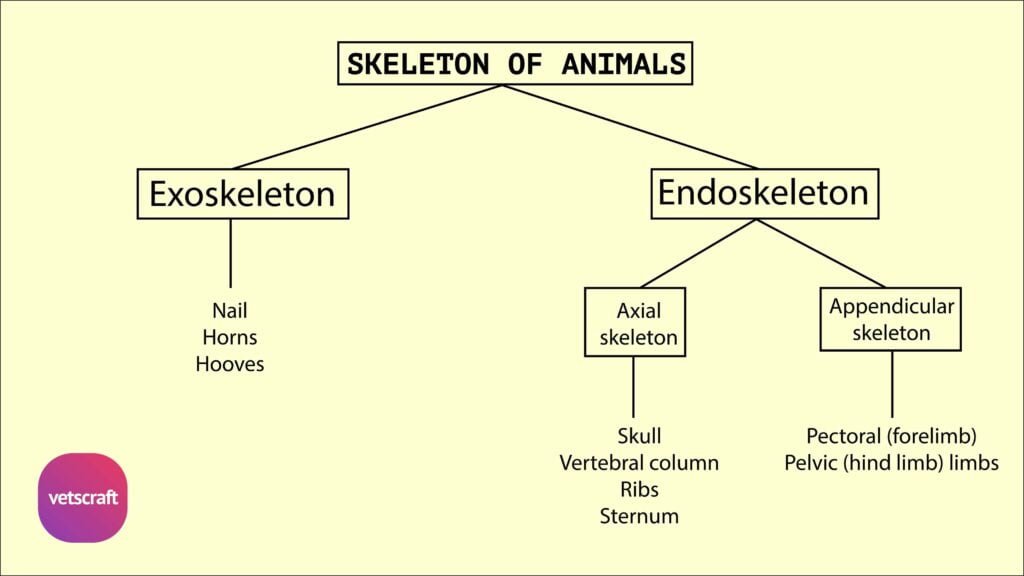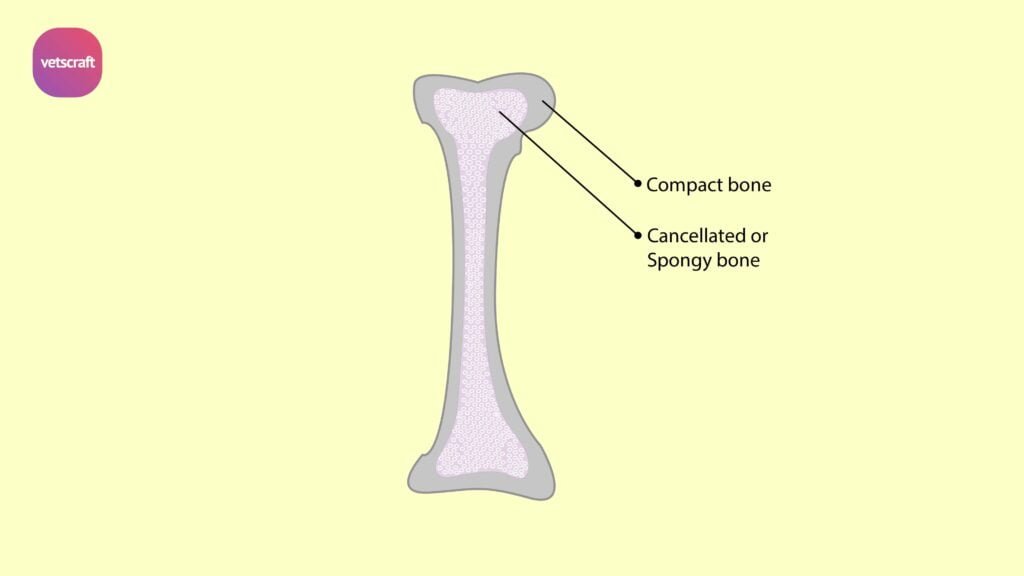TABLE OF CONTENTS
Cervical Vertebrae of Animals
The cervical vertebrae form the skeleton of the neck. In the ox, horse, and dog, there are 7 cervical vertebrae. In all animals, including the fowl, the first and second vertebrae, named atlas and axis respectively, are atypical vertebrae.
In the ox, horse, and dog, the third, fourth, and fifth vertebrae are similar, while the sixth and seventh present some special features.

The transverse process consists of two parts in the 3rd to the 6th vertebrae, whereas in the 7th it is undivided. In the fowl, there are 14 cervical vertebrae. The third to the 14th show some special features when compared with the vertebrae of mammals.
Cervical vertebrae to be discussed in later parts:
Atlas
The atlas is the first cervical vertebra (C1) in animals and is unique in structure and function. It supports the skull and forms the atlanto-occipital joint, allowing the head to nod up and down.
Axis
The axis, or second cervical vertebra (C2), is distinguished by the presence of the dens (odontoid process), a peg-like structure that projects forward to articulate with the atlas. This allows for rotation of the head from side to side at the atlanto-axial joint.
3rd to 7th Cervical Vertebrae
The third to seventh cervical vertebrae (C3–C7) are classified as typical cervical vertebrae in most mammals. These vertebrae share common features like a body, transverse processes, vertebral foramen, and a bifid transverse process in some species.

